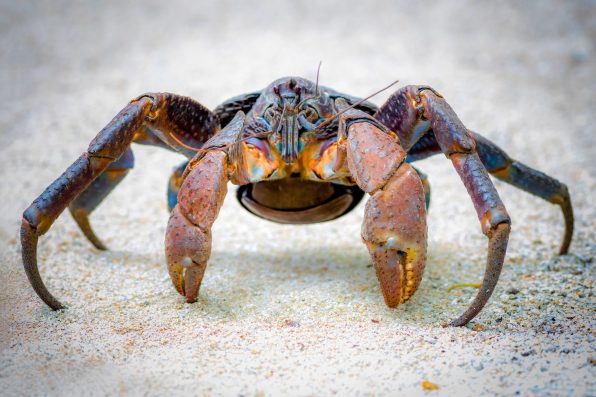If you’ve never seen a coconut crab before, the sheer size of it may frighten you. Personally, I would not want to cross paths with such a creature. Coconut crabs are the largest land-based crustaceans in the world.
They live on islands in the Pacific and Indian oceans. Their leg span can reach up to three feet, and they can weigh as much as nine pounds. They may be giants for crabs, but they’re gentle for the most part (lucky us!)
Their front claws are where their power comes from. Coconut crabs have tremendous strength, gripping objects tightly and dragging them around. They have the ability to move objects that weigh more than 60 pounds.
These creatures have a love for objects belonging to humans, which has earned them the nickname of “robber crabs.” They are especially attracted to shiny pots and pans but will also take anything from sandals to camera equipment, dragging the items back to their burrows.
Coconut crabs come out at night to feed. They use their front claws to crack open coconuts to consume the flesh inside, which is the main part of their diets.
In addition, they’ll eat seeds, nuts, fruit, the remains of dead rats, and even each other. They have also been known to feast on chickens and kittens! To locate such prey, they use their excellent sense of smell.
According to Wired, “the coconut crab finds food with its extremely well-developed sense of smell. Like an insect, it uses antennae to zero in on its vittles but takes this to an extreme by devoting considerable brainpower to the sense.”
The coconut crab’s incredible strength and sense of smell have led to speculation that the species might be behind the disappearance of American aviation pioneer Amelia Earhart.
She was said to have perished in the Pacific, but some researchers have theorized that she crash-landed on a remote island in the Pacific called Nikumaroro. There, the crabs consumed her remains and dragged her bones away.

Sign up for Chip Chick’s newsletter and get stories like this delivered to your inbox.


